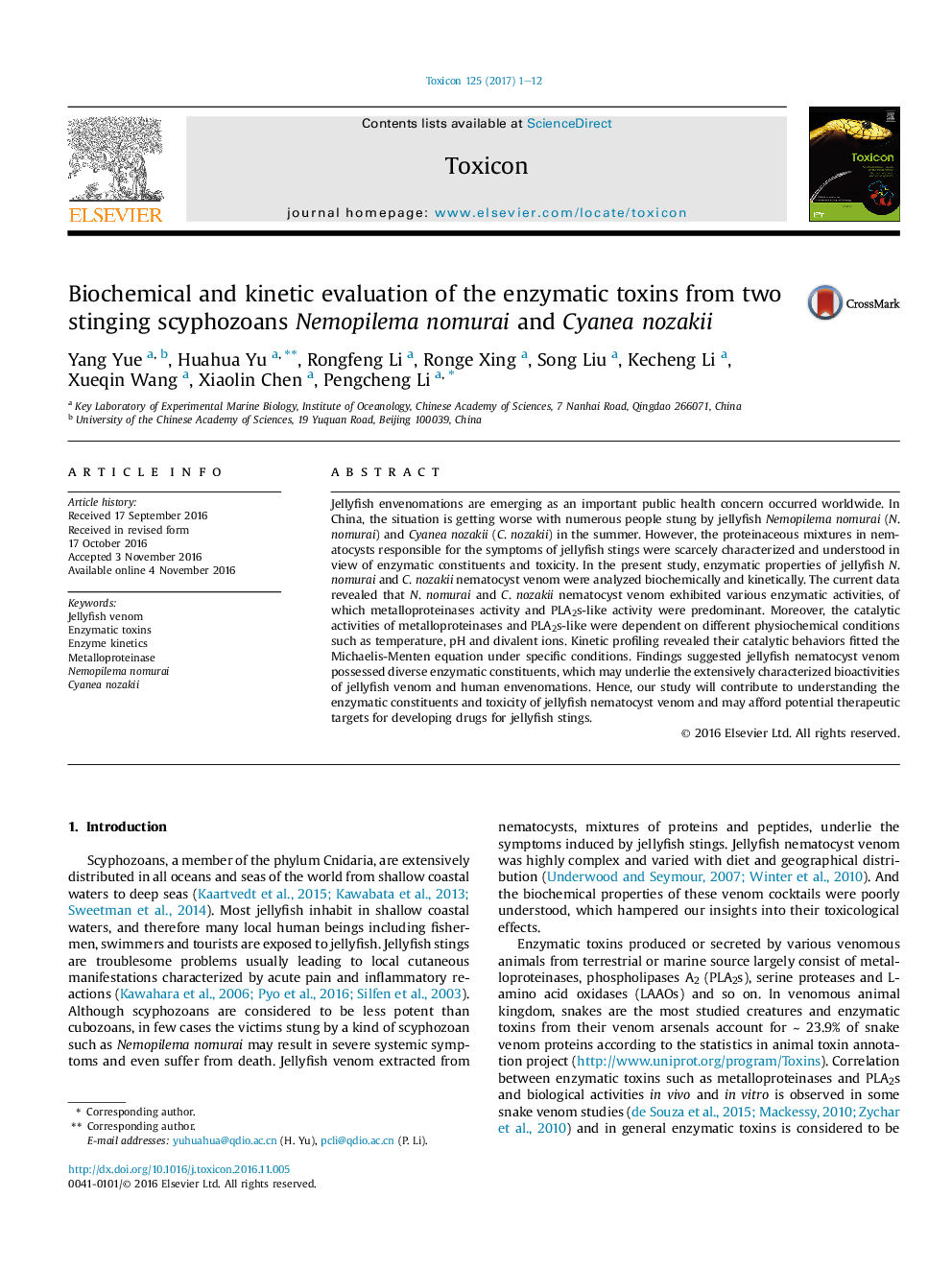| کد مقاله | کد نشریه | سال انتشار | مقاله انگلیسی | نسخه تمام متن |
|---|---|---|---|---|
| 5519417 | 1544111 | 2017 | 12 صفحه PDF | دانلود رایگان |

- Jellyfish N. nomurai and C. nozakii nematocyst venom exhibited significant enzymatic properties.
- Jellyfish venom metalloproteinase activity and PLA2 activity varied depending on the physicochemical conditions.
- NnNV metalloproteinases kinetically degraded azocasein with the Vmax value of 11.4 ± 1.2 U/mg/min.
- NnNV PLA2s exhibited slightly higher catalytic activity on NOBA than that of CnNV with a kcat value of 7.5Â ÃÂ 10â3Â minâ1.
Jellyfish envenomations are emerging as an important public health concern occurred worldwide. In China, the situation is getting worse with numerous people stung by jellyfish Nemopilema nomurai (N. nomurai) and Cyanea nozakii (C. nozakii) in the summer. However, the proteinaceous mixtures in nematocysts responsible for the symptoms of jellyfish stings were scarcely characterized and understood in view of enzymatic constituents and toxicity. In the present study, enzymatic properties of jellyfish N. nomurai and C. nozakii nematocyst venom were analyzed biochemically and kinetically. The current data revealed that N. nomurai and C. nozakii nematocyst venom exhibited various enzymatic activities, of which metalloproteinases activity and PLA2s-like activity were predominant. Moreover, the catalytic activities of metalloproteinases and PLA2s-like were dependent on different physiochemical conditions such as temperature, pH and divalent ions. Kinetic profiling revealed their catalytic behaviors fitted the Michaelis-Menten equation under specific conditions. Findings suggested jellyfish nematocyst venom possessed diverse enzymatic constituents, which may underlie the extensively characterized bioactivities of jellyfish venom and human envenomations. Hence, our study will contribute to understanding the enzymatic constituents and toxicity of jellyfish nematocyst venom and may afford potential therapeutic targets for developing drugs for jellyfish stings.
Journal: Toxicon - Volume 125, January 2017, Pages 1-12